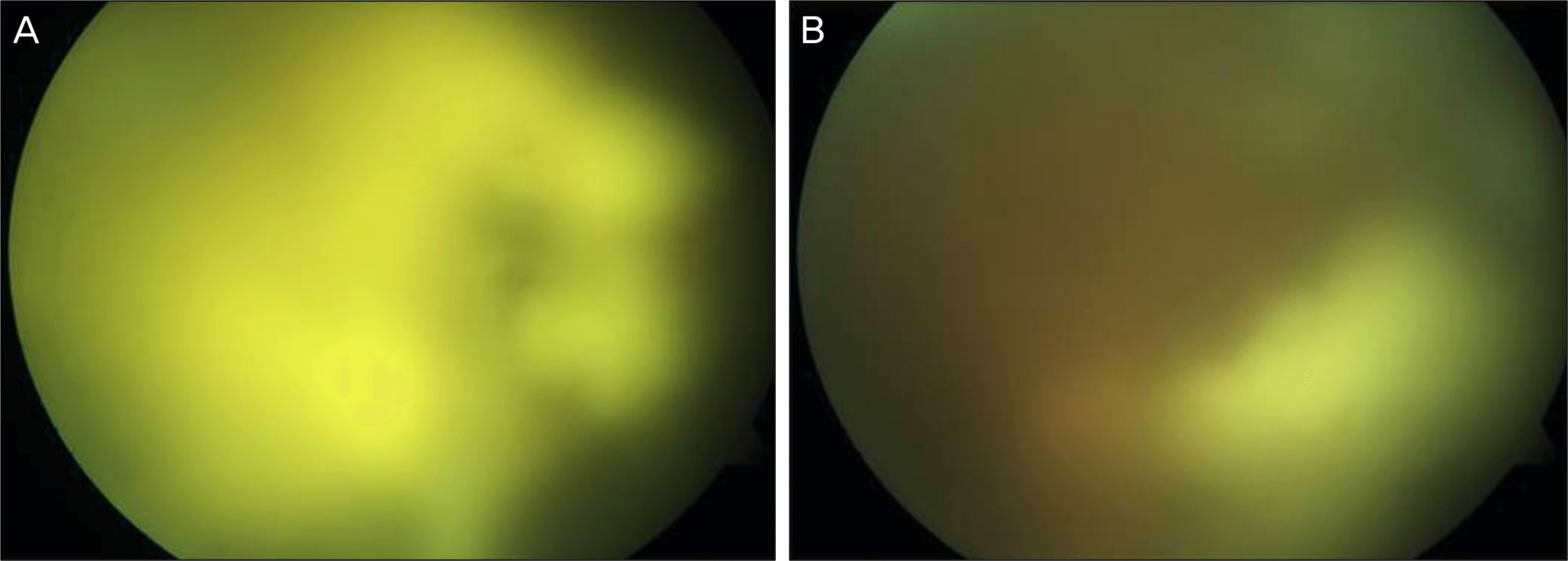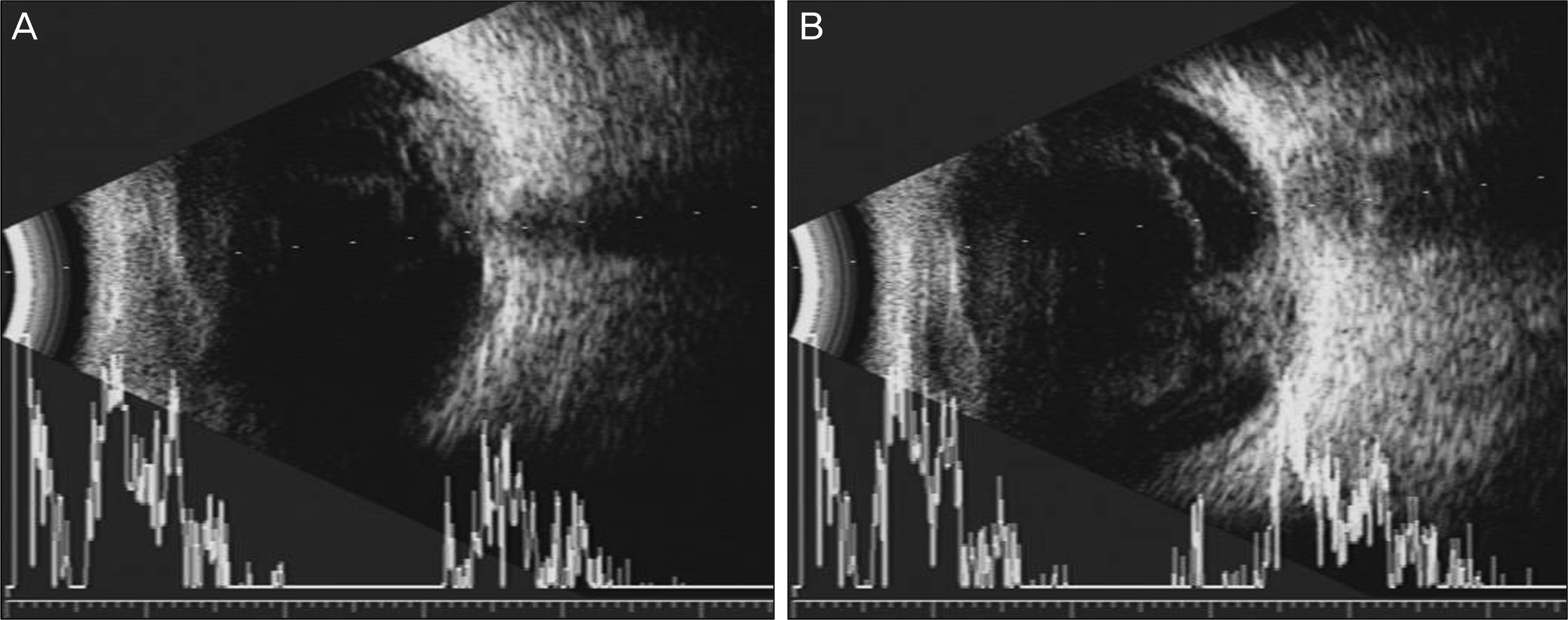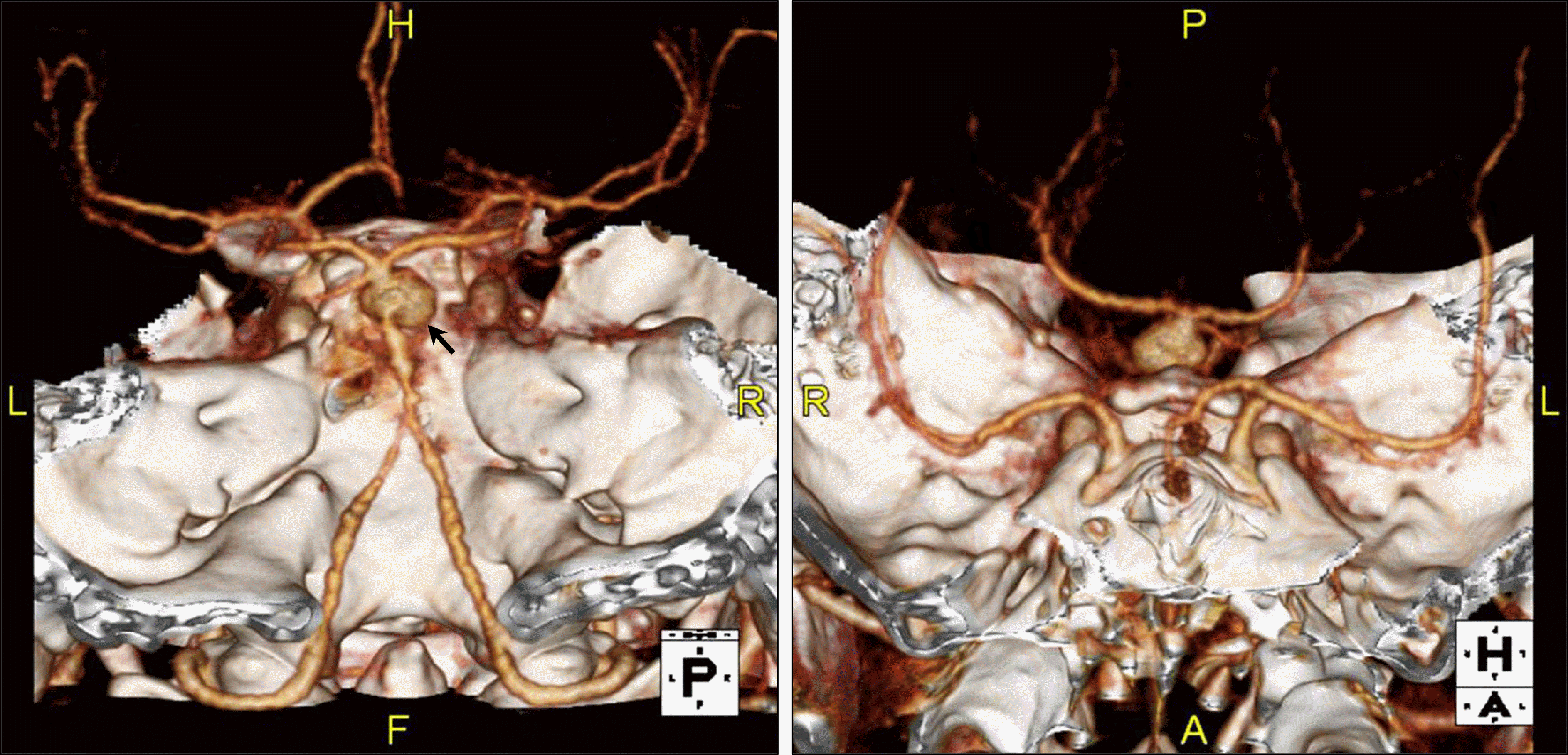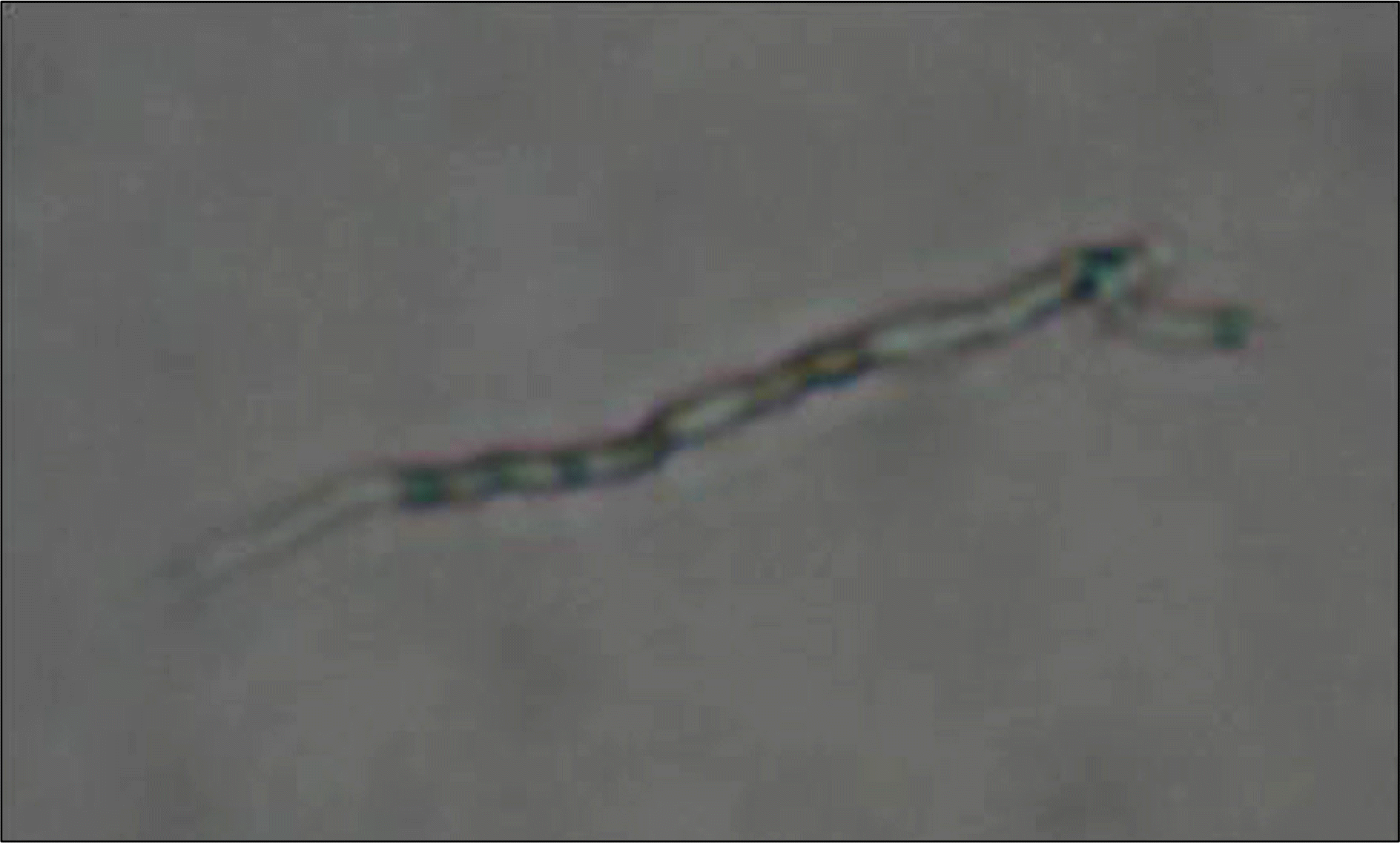Abstract
Purpose
To report a case of mycotic aneurysm of the cerebral basilar artery associated with bilateral endogenous aspergillus endophthalmitis.
Case summary
A 41-year-old man with no underlying disease presented with decreased vision in both eyes. The patient was diagnosed with bilateral endogenous endophthalmitis, and the authors performed a vitrectomy and lensectomy on the right eye. Hyphae were detected in the vitreous sample, and systemic amphotericin was administered. Three days after the operation, the patient became comatose due to a subarachnoid hemorrhage. Aspergillus antigen was detected in the vitreous sample and in the cerebrospinal fluid. Subarachnoid hemorrhage was due to the rupture of a mycotic aneurysm of the cranial basilar artery, complicated by aspergillus infection of the central nervous system.
Go to : 
References
1. Ness T, Pelz K, Hansen LL. Endogenous endophthalmitis: microorganisms, disposition and prognosis. Acta Ophthalmol Scand. 2007; 85:852–6.

2. Irvine WD, Flynn HW Jr, Miller D, et al. Endophthalmitis caused by gram negative organisms. Arch Ophthalmol. 1992; 110:1450–4.
3. Okada AA, Johnson RP, Liles WC, et al. Endogenous bacterial endophthalmitis. Report of a ten-year retrospective study. aberrationsogy. 1994; 101:832–8.
4. Jackson TL, Eykyn SJ, Graham EM, et al. Endogenous bacterial endophthalmitis: a 17-year prospective series and review of 267 reported cases. Surv Ophthalmol. 2003; 48:403–23.

5. Hwang JH, Cho NC. Prognostic factors in patients with endogenous endophthalmitis. J Korean Ophthalmol Soc. 2009; 50:858–63.

6. Schiedler V, Scott IU, Flynn HW Jr, et al. Culture-proven endogenous endophthalmitis:clinical features and visual acuity outcomes. Am J Ophthalmol. 2004; 137:725–31.
7. Binder MI, Chua J, Kaiser PK, et al. Endogenous endophthalmitis:an 18-year review of culture-positive cases at a tertiary care center. Medicine (Baltimore). 2003; 82:97–105.
8. Ku M, Jung JO, Lee DY, et al. Endogenous candidal endophthalmitis with bilateral massive submacular abscess. J Korean Ophthalmol Soc. 2008; 49:1701–5.
9. Zhang YQ, Wang WJ. Treatment outcomes after pars plana vitrectomy for endogenous endophthalmitis. Retina. 2005; 25:746–50.

10. Pollack K, Naeke A, Fischer R, et al. Severe Aspergillus endophthalmitis occurring after liver transplantation in an 8-month-old baby. Ophthalmologe. 2008; 105:66–9.
11. Cattelan AM, Loy M, Tognon S, et al. An unusual presentation of invasive aspergillosis after lung transplantation. Transpl Int. 2000; 13:183–6.

12. Hunt KE, Glasgow BJ. Aspergillus endophthalmitis. An unrecognized endemic disease in orthotopic liver transplantation. Ophthalmology. 1996; 103:757–67.
13. Sundaram C, Umabala P, Laxmi V, et al. Pathology of fungal infections of the central nervous system: 17 years' experience from Southern India. Histopathology. 2006; 49:396–405.
14. Okada Y, Shima T, Nishida M, et al. Subarachnoid hemorrhage caused by Aspergillus aneurysm as a complication of transcranial biopsy of an orbital apex lesion-case report. Neurol Med Chir (Tokyo). 1998; 38:432–7.
15. Hurst RW, Judkins A, Bolger W, et al. Mycotic aneurysm and cerebral infarction resulting from fungal sinusitis: imaging and pathologic correlation. AJNR Am J Neuroradiol. 2001; 22:858–63.
16. DeLone DR, Goldstein RA, Petermann G, et al. Disseminated aspergillosis involving the brain: distribution and imaging aberrations. AJNR Am J Neuroradiaol. 1999; 20:1597–604.
17. Ahsan H, Ajmal F, Saleem MF, Sonawala AB. Cerebral fungal infection with mycotic aneurysm of basilar artery and subarachnoid haemorrhage. Singapore Med J. 2009; 50:e22–5.
Go to : 
 | Figure 1.Fundus photograph of right eye (A), and left eye (B) at the initial visit. Bilateral severe iniflammation with massive yellowish abscess is found. |
 | Figure 2.The ultrasonographic findings of right eye (A), and left eye (B) at the initial visit. Increased vitreous reflectivity due to inflammatory reaction is found in both eye. |




 PDF
PDF ePub
ePub Citation
Citation Print
Print




 XML Download
XML Download